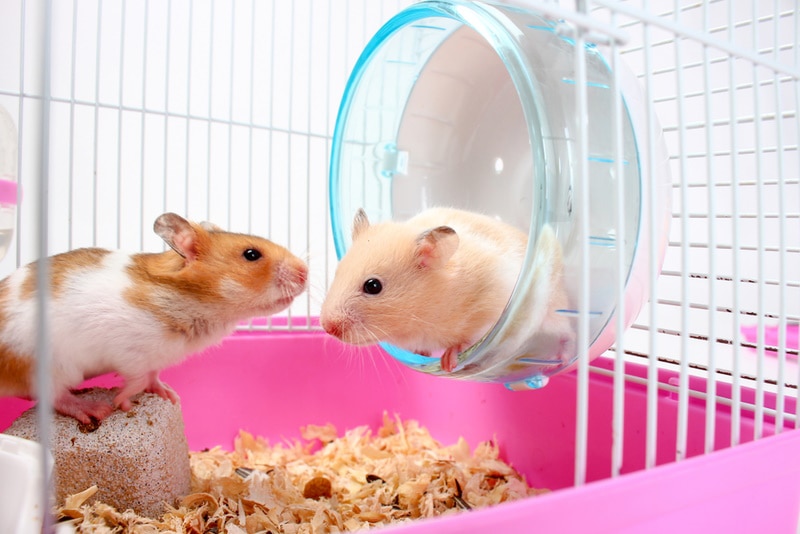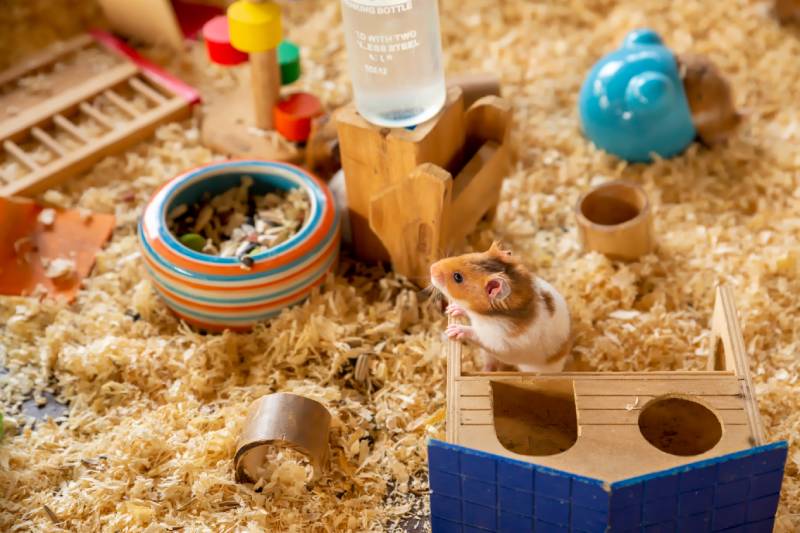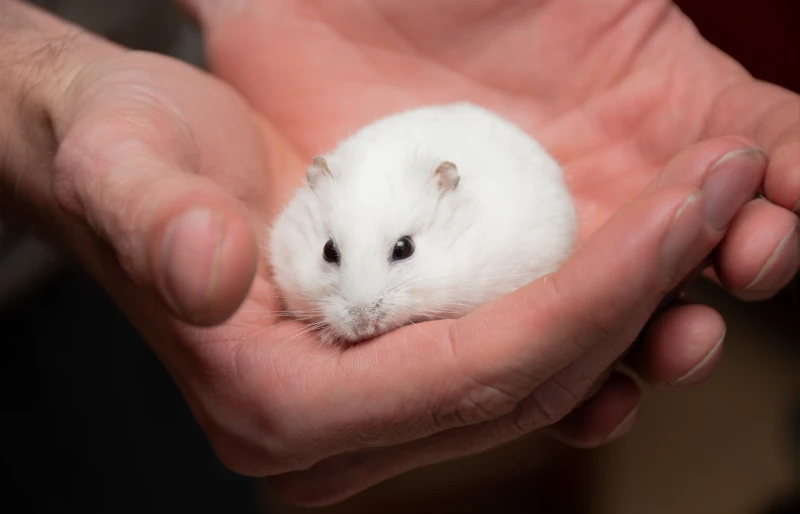Why Do Hamsters Kill Each Other? 4 Common Reasons & What to Do (Vet-Reviewed)

Updated on

Click to Skip Ahead
Tiny, fuzzy, and cute, in the right hands, hamsters make excellent companions. They are independent, not at all clingy, and like to get cuddly. And once these little buds warm up to you, they often become incredibly affectionate. Hamsters don’t feel the same way about their own kind, though, and tend to be extremely aggressive and territorial.
They’re used to fighting each other to death for territory. In other cases, mothers eat newborns to “recharge their batteries” and stay alive. Unfortunately, this doesn’t only apply to wild hamsters: their primal instincts don’t go away when kept as pets. So, why does this happen, exactly? And how do you put a stop to this? Time to find out!
The 4 Reasons Why Hamsters Kill Each Other
1. It’s All About Turf Wars
Hamsters are not at all friendly or tolerant toward their brothers and sisters. Also, in contrast to most species, the females are more aggressive than the males – particularly for Syrian hamsters. They fight fellow hamsters for territory and only stop once they accept defeat and leave (or when that other hamster simply can’t fight anymore). This is why it’s NOT recommended to keep two hamsters in the same cage.
No matter how spacious it might be, these little cannibals will still start a skirmish. This is especially true if they haven’t been desensitized to each other from a young age (an option with some dwarf breeds). And the chances of you finding one of the pets dead in the corner are disturbingly high.

2. Lack of Food and Shelter Are to Blame
Like most rodents, hamsters have lots of babies, and they fight each other for food and water. Or when there aren’t enough safe and cozy burrows, they compete for survival. Overcrowding is a huge problem for these creatures. So, while they won’t necessarily eat each other, the injuries are often severe enough to kill a hamster or make it easy prey.
3. Stress Also Plays a Big Role in the Killings
The wilderness is not a welcoming place for hamsters. Their claws and teeth are too weak to fight bigger, stronger animals. Hamsters are hunted by a wide range of predators, including buzzards, foxes, eagles, and badgers. Naturally, that leads to a buildup of stress and anxiety. And in contrast to dogs, sheep, and cattle, hamsters are not pack animals.
So, when they’re surrounded by a bunch of other hamsters, that might lead to cannibalism. Also, these pets only enjoy life as pets when they have a large enough cage at their disposal. There’s a condition known as “cage rage”; it makes these buds overly aggressive and leads to random biting and urinating.
- For dwarf hamsters, 640 square inches of real estate is the bare minimum.
- For larger species, aim for at least 800 square inches or more.

4. The Mother Is Stressed
Female hamsters are known to eat their young when they’re stressed. In a strict sense this is known as infanticide, not cannibalism. It could be that the mom is running low on nutrition and has to eat her offspring to survive. In other cases, they eat the young to “cut the numbers” if they feel like one or more of their pups are not healthy. This is because they don’t want to attract predators to their nest via the smell of a deceased pup, as it might put her healthy pups at risk.
How Do You Stop Hamster Cannibalism?
The easiest way to ensure that hamsters don’t kill each other is to house them individually. Hamsters are solitary animals, and females only tolerate males near them when they’re interested in mating.
Though dwarf hamsters that are raised together from a young age (ideally as littermates) can be desensitized towards each other, there is still a risk (albeit low) of them not getting along at times.
If you have a female with young pups, you need to ensure that she’s kept in a quiet environment to herself with no other hamsters nearby to bother her. She should also be well fed and kept away from males (female hamsters don’t use a male to help raise their young). This offers her the best chance of not eating her young out of stress.
Can You Make Hamsters Co-Exist Peacefully? A Detailed Guide
Generally speaking, getting hamsters to coexist is a risk, especially when they’re introduced to each other as adults. It is something that isn’t recommended. Nonetheless, the following tips may help.
- Adopt the least aggressive species. Dwarf (Russian and Roborovski) and Campbell’s hamsters are more likely to coexist when raised together from a young age, ideally as littermates. In contrast, Syrian and Chinese hamsters are alarmingly territorial, and no amount of snacks, petting, or verbal encouragement will make them tolerate another furry critter in their cage. So, make sure you’re not bringing home a feisty pet!
- Socialize the pets at a young age. Early socialization is an effective technique for making animals co-exist and (with luck) warm up to each other. As mentioned, Dwarf hamsters are more likely to show success with this method.
- Don’t put two hamsters in the same cage. Want to play it safe? Then instead of buying one large cage, invest in two smaller ones and let the pets enjoy their freedom. It’s best to keep these cages in different
Conclusion
Hamsters are independent, fun, and adorable. To a first-time owner, they may seem like the sweetest, most peaceful creatures on the planet. However, before adopting a hamster, you should know that these gnawers can be hostile toward their siblings and don’t like to share cages, food, or toys. Furthermore, hamsters have cannibalistic tendencies!
For example, the Syrian and Chinese species sometimes eat each other to assert dominance, take back precious territory, or thin out the herd. That being said, even dwarf hamsters can display the signs discussed in this article. It’s best to house hamsters individually whenever possible.
See Also:
- Do Hamsters Explode? Vet-Reviewed Myth vs. Truth
- How Many Babies Do Hamsters Have in One Litter? Vet-Reviewed Facts & FAQ
Featured Image Credit: HelloRF Zcool, Shutterstock











